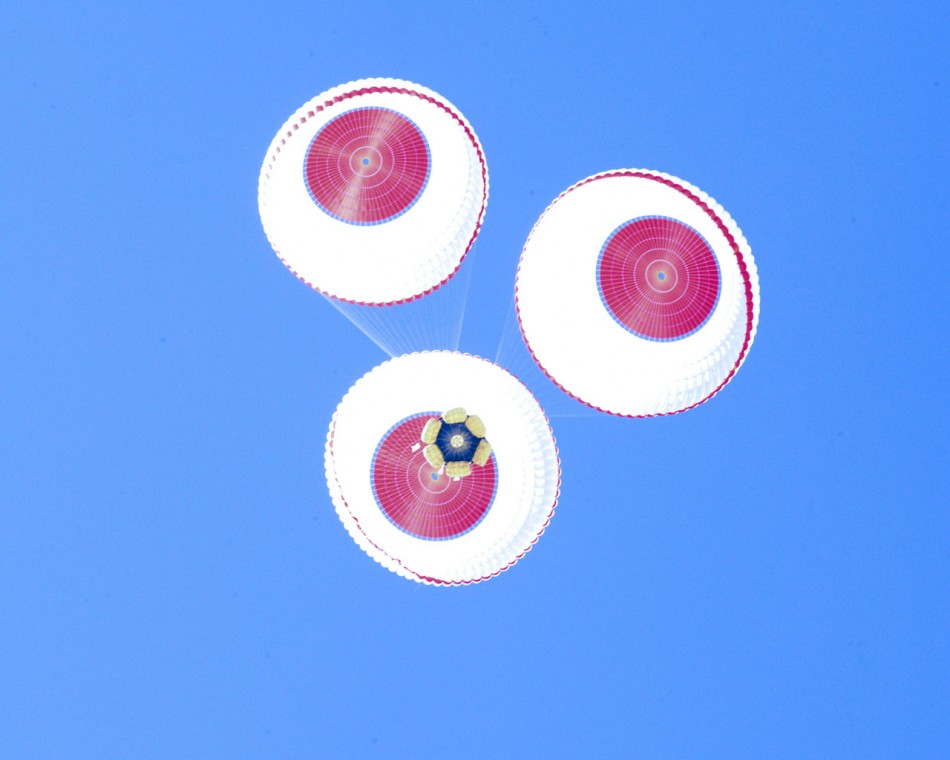Boeing Completes Parachute Drop Test for Crew Space Transportation Spacecraft
Boeing Co. has announced the successful completion of the second parachute drop test of the company's Crew Space Transportation (CST)-100 spacecraft, at the Delamar Dry Lake bed in Nevada, USA. The test marks an important milestone in the development of the CST-100 crew capsule which will transport US astronauts to and from Low-Earth Orbit (LEO) and the International Space Station (ISS).
An Erickson Air Crane helicopter lifted the capsule to about 14,000 feet above ground and initiated a drogue parachute deployment sequence that was followed by the deployment of the main parachute. The capsule then descended to a smooth ground landing, cushioned by six inflated air bags.
"This second parachute drop test validates Boeing's innovative system architecture and deployment plan," said John Mulholland, Vice President and Program Manager, Boeing Commercial Programs, in a statement, adding, "Boeing's completion of this milestone reaffirms our commitment to provide safe, reliable and affordable crewed access to space."
According to Science Daily, Boeing's CST system is designed to be a reusable, capsule-shaped spacecraft capable of taking up to seven people or a combination of people and cargo. Boeing has designed the spacecraft to be compatible with a variety of expendable rockets. The company has selected the United Launch Alliance Atlas V launch vehicle for initial CST-100 test flights in 2015-16. The Boeing Commercial Crew program includes the design, manufacture, test and evaluation and demonstration of the CST-100 spacecraft, launch vehicle and mission operations.
The first CST test was conducted on 3 April and it validated the architecture and deployment of the parachute system, characterised pyrotechnic shock loads, confirmed parachute size and design and identified potential forward compartment packaging and deployment issues. Boeing performed this test with the support of its Commercial Crew team, including Bigelow Aerospace, which played a key role by providing the capsule test article, and associated electronics as well as supporting the test itself.
"We're thrilled to see the robust progress that is being made via the Commercial Crew program," stated Robert T. Bigelow, company Founder and President. "This successful test provides further proof that the commercial crew initiative represents the most expeditious, safe and affordable means of getting America flying in space again," he added.
Boeing selected United Launch Alliance's Atlas V rocket for initial CST-100 test flights. As per reports, all of NASA's industry partners, including Boeing, continue to meet their established milestones in developing commercial crew transportation capabilities.



© Copyright IBTimes 2025. All rights reserved.




















